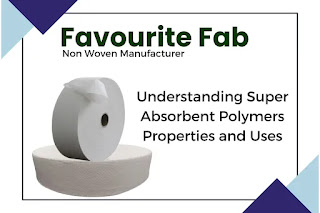Types of Non Woven Material: Properties, Applications, and Benefits
Non-woven materials have revolutionized various industries with their versatility, durability, and cost-effectiveness. Unlike traditional woven fabrics, non-woven materials are made by bonding fibers together through mechanical, chemical, or thermal processes. This blog explores the different types of non-woven materials, their properties, applications, and benefits.
Types of Non-Woven Materials
1. Spunbond Non-Woven Fabric
Properties:
High tensile strength
Lightweight and breathable
Resistant to moisture and chemicals
Applications:
Packaging bags
Medical masks and gowns
Agricultural covers
Benefits:
Cost-effective and eco-friendly
Available in various GSM and colors
Recyclable and reusable
2. Meltblown Non-Woven Fabric
Properties:
Fine fiber structure
Excellent filtration efficiency
Soft and lightweight
Applications:
Face masks and respirators
Air and liquid filtration systems
Insulation materials
Benefits:
High bacterial filtration efficiency (BFE)
Provides excellent protection in medical and industrial settings
Enhances product performance with superior absorbency
3. Needle-Punched Non-Woven Fabric
Properties:
High durability and strength
Good thermal insulation
Can be made with synthetic or natural fibers
Applications:
Automotive interiors
Carpet backing
Geotextiles for construction
Benefits:
Long-lasting and robust
Provides excellent reinforcement
Suitable for heavy-duty applications
4. Hydroentangled (Spunlace) Non-Woven Fabric
Properties:
Soft and absorbent
Lint-free with excellent drapability
Biodegradable options available
Applications:
Wet wipes and baby wipes
Medical dressings
Cleaning cloths
Benefits:
Skin-friendly and chemical-free
High liquid absorbency
Versatile for medical and personal care products
5. Thermally Bonded Non-Woven Fabric
Properties:
Lightweight and flexible
Smooth surface finish
Good dimensional stability
Applications:
Disposable hygiene products (diapers, sanitary pads)
Packaging and laminates
Protective clothing
Benefits:
Enhanced strength and durability
Provides good barrier protection
Low-cost manufacturing process
Conclusion
Non-woven materials have diverse applications, from healthcare to industrial and agricultural uses. Understanding their properties and benefits helps in choosing the right material for specific needs. Whether you require high filtration efficiency, durability, or eco-friendliness, non-woven fabrics offer a versatile solution.
https://favouritehub.com/types-of-non-woven-material-properties-applications-and-benefits/
.webp)



Comments
Post a Comment